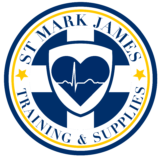Mask Fit Testing (Respirator) — N95 & Half-Mask (QLFT)
Overview
Our respirator mask fit testing verifies that your selected mask forms an adequate seal on your face so it can perform as intended on the job. We perform qualitative fit testing (QLFT) using Bitrex® or saccharin protocols for N95 (disposable filtering facepiece) and elastomeric half-mask respirators. Sessions are fast, professional, and designed for individuals or groups.
Session length: typically 15–20 minutes per person
Methods: Qualitative (Bitrex®/saccharin aerosol)
Respirator types: N95 filtering facepiece, elastomeric half-mask (with cartridges)
Formats: Individual appointments • On-site group testing • Private sessions at our centres
Fit testing frequency and acceptance are set by your employer/program and applicable standards. Always confirm your organization’s requirements.
Who Should Be Fit Tested
- Healthcare, dental, and long-term care staff who use N95 or half-mask respirators
- Laboratory, manufacturing, trades, construction, and emergency services personnel
- Students in clinical placements or programs that require proof of a current fit test
- Any worker who must wear a tight-fitting respirator as part of their job
What’s Included (During Your Appointment)
- Screen & explain: brief questionnaire and test overview
- Donning & seal check: correct strap placement and user seal check
- Sensitivity test: establish your detection threshold (Bitrex®/saccharin)
- Fit test exercises: talking, head and body movements, normal/light breathing
- Result & documentation: pass/fail outcome, fit test record, and sticker/card (as applicable)
Before You Arrive (Read Carefully)
- Be clean-shaven: no facial hair crossing the seal area (beards, stubble, long sideburns).
- Bring the respirator you’ll use at work (make/model/size). If you don’t have one, we can test on commonly stocked models; your employer may still require testing on the exact mask used on the job.
- Avoid food, drink (except water), gum, smoking, or vaping for 15–30 minutes before testing (can affect the taste agent).
- Minimize makeup, lotions, or heavy fragrances on test areas.
- If you wear glasses/PPE, bring them—they can affect the seal.
- Your employer is responsible for confirming medical suitability for respirator use and specifying the required respirator type.
Find Mask Fit Testing Near You
Choose your city to see live dates, pricing, and registration:
- Vancouver, BC
- Calgary, AB
- Edmonton, AB
- Kelowna, BC
- Grande Prairie, AB
- Lethbridge, AB
- Regina, SK
- Winnipeg, MB
See all locations
https://stmarkjamestraining.ca/locations/
How Long Is a Fit Test Valid?
Validity is set by employer policy and applicable standards. Many organizations require annual or bi-annual (every 2 years) testing, and re-testing whenever you change mask model/size, experience significant facial/dental changes, or after weight change/surgery that could affect fit.
Group & On-Site Fit Testing
We can test teams on site or host private sessions at our centres. Typical throughput is 10–12 people per hour per tester (QLFT), depending on respirator variety and paperwork. Volume pricing and multi-date scheduling available.
What we bring: Bitrex®/saccharin kits, hoods, disinfected adapters, documentation templates.
What you provide: room with ventilation, participant roster, the exact respirators to be tested (or specify models in advance).
Frequently Asked Questions
What’s the difference between a fit test and a user seal check?
A fit test is a formal procedure performed by a tester to verify an adequate seal for a given mask model/size. A user seal check is a quick check you perform every time you put the respirator on.
Can I pass with a beard?
No. Tight-fitting respirators require a clean-shaven seal area. Facial hair compromises the seal and will result in a fail.
Do you offer quantitative fit testing (QNFT)?
We currently provide qualitative testing (Bitrex®/saccharin) for N95 and half-mask respirators. If your employer requires QNFT, ask about options for referral or alternate arrangements.
What documentation do I receive?
A fit test record noting your name, date, mask make/model/size, method used, and pass/fail result. Employers should keep a copy for compliance.
I changed mask models—do I need a new test?
Yes. Fit is model- and size-specific. Switching models/sizes requires a new test.
Do I need a medical exam?
Any medical clearance required for respirator use is managed by your employer or program. We do not conduct medical evaluations.
What to Bring
- Photo ID
- Your respirator (exact model/size) if supplied by your employer
- Glasses/PPE you’ll wear with the mask
- Any required employer forms for signature/records
